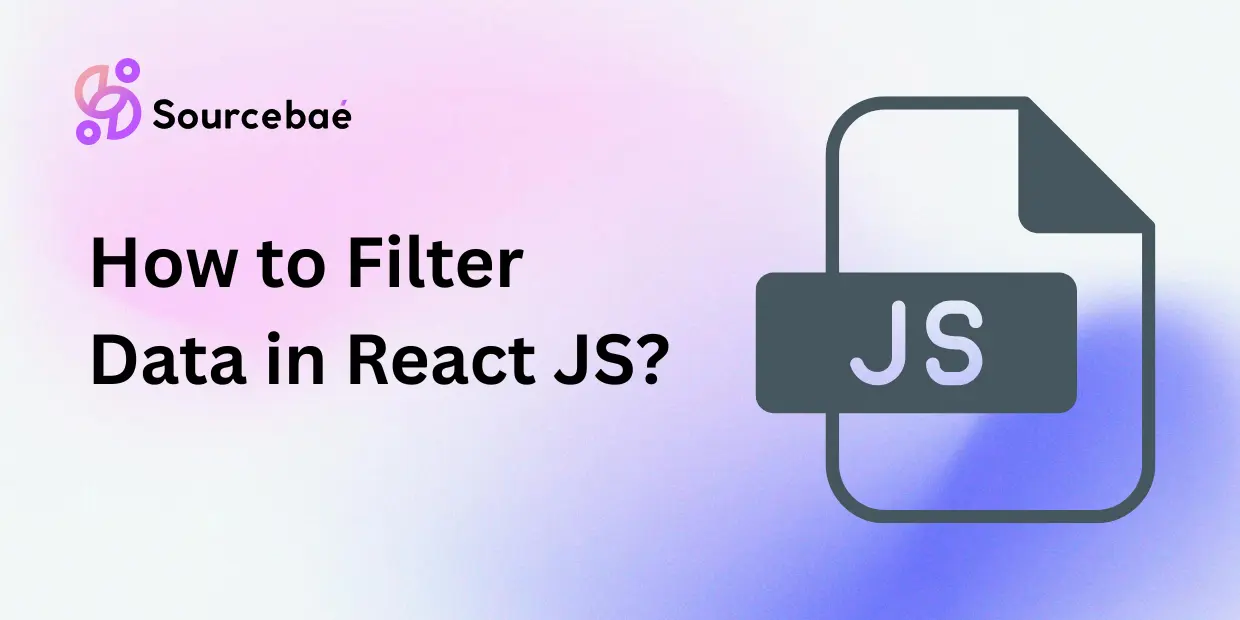React JS is a popular JavaScript library for building user interfaces, known for its flexibility and reusability. One common task developers often encounter is filtering data within a React application. Whether you’re dealing with a list of products, user profiles, or any other dataset, implementing data filtering can greatly enhance user experience. In this guide, we’ll walk you through the process of Filter Data in React JS.
Filtering data involves narrowing down a dataset based on specific criteria, providing users with tailored and relevant information. In React JS, data filtering can be implemented in various ways, from simple to complex setups. Whether you’re building an e-commerce website or a social media platform, mastering data filtering is crucial to delivering an enhanced user experience.
Setting Up Your React Environment
Before diving into data filtering, ensure you have a React environment set up. If you’re new to React, you can quickly set up your development environment by following the official documentation on the React website.
Creating Sample Data for Filtering
To demonstrate data filtering, let’s create a sample dataset. Imagine we’re building a product listing page, and we have an array of products with properties like name, category, price, and availability.
Displaying Data in Your React Component
To display the sample data, we’ll create a React component that maps through the array and renders each product as a card or a list item. This will provide us with a visual representation of the data we’ll be filtering.
Implementing Basic Filtering
In this section, we’ll start with basic filtering functionality. We’ll add UI elements like input fields and dropdowns to allow users to select filtering criteria. Then, we’ll apply JavaScript methods to filter the data based on the selected criteria.
Adding Advanced Filtering Options
Taking filtering to the next level, we can provide users with advanced options such as multiple criteria selection, range filtering, and sorting. These features enhance the user experience by offering more control over the displayed data.
Creating a Filtered Data Component
To keep our code organized, let’s create a separate component dedicated to handling filtered data. This component will receive the original dataset and the applied filters as props, then render the filtered results.
Handling User Inputs Effectively
User inputs can be unpredictable. We need to implement input validation and debounce techniques to ensure smooth filtering behavior and prevent unnecessary re-renders.
Applying Styling for Visual Feedback
A well-designed UI enhances user engagement. Apply CSS styles to indicate active filters, highlight filtered items, and provide visual feedback to users as they interact with the filtering interface.
Utilizing External Libraries for Efficiency
Several third-party libraries can streamline the filtering process. We’ll explore a couple of popular options that offer pre-built UI components and optimized filtering algorithms.
Tips for Optimizing Filtering Performance
As your dataset grows, filtering performance becomes crucial. Learn optimization techniques such as memoization and virtualization to maintain a smooth user experience even with large datasets.
Incorporating Pagination with Data Filtering
When dealing with a large number of items, pagination complements data filtering. Combine these features to create a seamless browsing experience for users.
Making Filtered URLs for Bookmarking
Enable users to bookmark or share filtered views by updating the URL with filter parameters. This adds a layer of convenience and enhances the overall usability of your application.
Ensuring Responsiveness in Filtered Views
With the variety of devices users use, responsive design is essential. Ensure your filtering components adapt gracefully to different screen sizes and orientations.
Catering to No-Results Scenarios
Handle situations where filters yield no results. Provide clear feedback to users and suggest alternative actions to help them find what they’re looking for.
Accessibility Considerations for Filters
Make your filtering components accessible to users with disabilities. Use semantic HTML elements and ARIA attributes to ensure screen readers can interpret and convey filtering options effectively.
Testing Your Filtered Components
Robust testing is essential to maintain the integrity of your application. Write unit and integration tests to verify that your filtering components work as expected.
Common Challenges and Troubleshooting
While implementing filtering, you might encounter challenges like state management, performance issues, or unexpected behaviors. We’ll address common problems and offer solutions.
Comparing Client-side vs. Server-side Filtering
Understand the differences between client-side and server-side filtering. Each approach has its pros and cons, and choosing the right one depends on your project’s requirements.
Future Trends in Data Filtering
Stay up to date with the latest trends in data filtering. Explore technologies like GraphQL and serverless computing, which offer new possibilities for optimizing data retrieval and manipulation.
Real-world Applications of Filtered Data in React JS
See how data filtering is applied in real-world scenarios. We’ll showcase examples from various industries, highlighting the creative ways developers leverage filtering to improve user experiences.
FAQs
Q: Can I use external data sources for filtering in React JS?
A: Yes, you can fetch data from APIs or databases and apply filtering logic within your React components.
Q: Are there any performance considerations when filtering large datasets?
A: Filtering large datasets can impact performance. Employ techniques like pagination, memoization, and virtualization to mitigate this.
Q: Do I need to use a state management library like Redux for filtering?
A: While it’s not mandatory, state management libraries like Redux can simplify complex filtering scenarios by centralizing your application’s state.
Q: Can I combine multiple filters to refine results further?
A: Absolutely! You can allow users to apply multiple filters simultaneously to narrow down results based on various criteria.
Q: Is server-side filtering always a better option?
A: Not necessarily. Server-side filtering is suitable for large datasets or scenarios requiring strict data security. Client-side filtering offers a more responsive user experience.
Q: How can I optimize the performance of my filtering components?
A: Optimize performance through techniques like memoization, asynchronous rendering, and lazy loading components.
Conclusion
Filtering data in React JS is a valuable skill that can greatly enhance user experiences in your web applications. By following the steps and tips outlined in this guide, you’ll be well-equipped to implement effective data filtering strategies that cater to user needs and preferences.
If you’re a developer aiming to land a job at top tech companies, Sourcebae is here to make it easier for you. Simply create your profile, share your details, and let us take care of the rest—from matching you with the right opportunities to guiding you through the hiring process.






